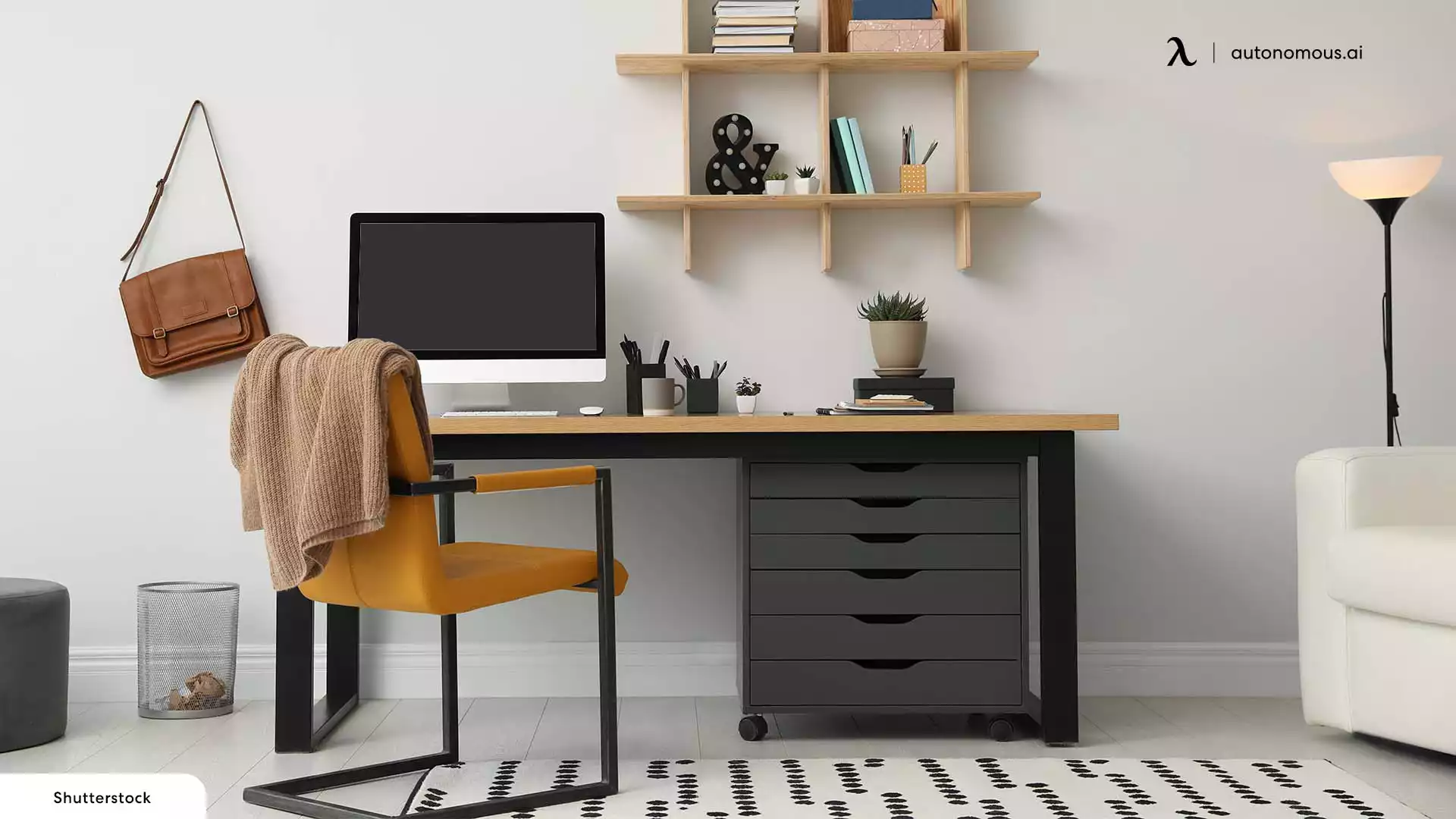Design Considerations for a DIY Desk with File Cabinet: Desk With File Cabinet Diy

Crafting a DIY desk with an integrated file cabinet offers a rewarding blend of functionality and personalized style. This project allows you to optimize your workspace, maximizing efficiency and minimizing clutter. By carefully considering design elements, material choices, and construction techniques, you can create a truly bespoke piece of furniture that perfectly suits your needs and aesthetic preferences.
Space-Saving Techniques and Ergonomic Principles
A well-designed desk with an integrated file cabinet should prioritize both space-saving techniques and ergonomic principles. For a compact design, consider a depth of approximately 24 inches for the desk surface, allowing ample room for comfortable work while maintaining a smaller footprint. The height should be around 29-30 inches, promoting good posture and reducing strain. The file cabinet, ideally, should be integrated seamlessly into the desk’s structure, perhaps beneath the desktop or as a side unit. To maximize storage, opt for vertical file drawers rather than lateral ones, offering greater capacity within a smaller space. Using lightweight yet durable materials like medium-density fiberboard (MDF) or plywood can further contribute to a less bulky overall design.
Creating a Detailed 3D Model, Desk with file cabinet diy
Before starting construction, creating a detailed 3D model is highly recommended. Software like SketchUp, Fusion 360, or even simpler options like Google’s free SketchUp web version, allows you to visualize the final product, refine dimensions, and identify potential issues early on. Specify material thickness in the model (e.g., ¾ inch for the desktop, ½ inch for the file cabinet sides). Define joinery techniques – such as dado joints, rabbet joints, or dowel joints – within the model to ensure precise cuts and a sturdy build. For instance, dado joints provide strong, interlocking connections between the desktop and the file cabinet, while dowel joints add extra stability to the cabinet’s framework. The 3D model serves as a blueprint, significantly reducing errors and material waste during construction.
File Cabinet Design Options
Several file cabinet designs can be integrated into your desk. A drawer-based system offers easy access to files, with individual drawers for better organization. However, drawers require more space and are generally more complex to build. A vertical file folder system, on the other hand, utilizes hanging file folders within a single, larger compartment, saving space but potentially requiring more precise measurements to ensure proper folder fit. A combination system, perhaps with a few drawers for smaller items and a larger vertical file section for bulkier documents, provides a versatile solution. Consider your typical filing needs when selecting the optimal design.
Parts List
The following table details the necessary components for building a basic desk with an integrated vertical file cabinet. Remember to adjust quantities and dimensions based on your specific design.
| Part Name | Quantity | Dimensions (inches) | Material |
|---|---|---|---|
| Desktop | 1 | 48 x 24 x ¾ | MDF or Plywood |
| File Cabinet Sides | 2 | 24 x 18 x ½ | MDF or Plywood |
| File Cabinet Back | 1 | 24 x 18 x ½ | MDF or Plywood |
| File Cabinet Bottom | 1 | 24 x 18 x ½ | MDF or Plywood |
| Drawer Fronts (if using drawers) | 2 | 20 x 4 x ½ | MDF or Plywood |
| Legs | 4 | 28 x 2 x 2 | Solid Wood |
| Screws | As needed | – | Wood screws |
| Wood Glue | 1 bottle | – | – |
